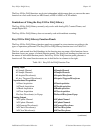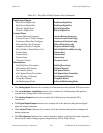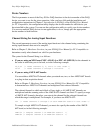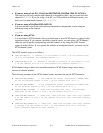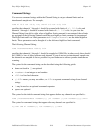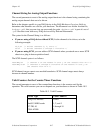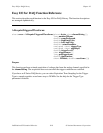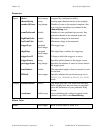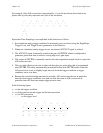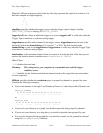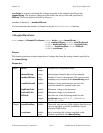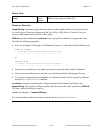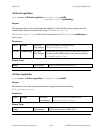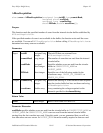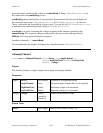
Easy I/O for DAQ Library Chapter 10
LabWindows/CVI Standard Libraries 10-10 © National Instruments Corporation
Parameter Discussion
channelString is the analog input channels that are to be sampled. Refer to the Channel String
for Analog Input Functions subsection of the Easy I/O for DAQ Library Function Overview
section of this chapter for the syntax of this string.
triggerType is the trigger type. The trigger types are:
Hardware Analog Trigger: HW_ANALOG_TRIGGER
Digital Trigger A: DIGITAL_TRIGGER_A
Digital Triggers A & B: DIGITAL_TRIGGER_AB
Scan Clock Gating: SCAN_CLOCK_GATING
Software Analog Trigger: SW_ANALOG_TRIGGER
Equivalent Time Sampling ETS_TRIGGER
• If you choose Hardware or Software Analog Trigger, data is retrieved after the analog
triggering parameters have been satisfied. Be sure that the Trigger Source is one of the
channels listed in the channel string. Hardware triggering is more accurate than software
triggering, but it is not available on all boards.
• If you choose Digital Trigger A:
– If pretriggerScans is 0, the trigger starts the acquisition. For the MIO-16, connect the
digital trigger signal to the START TRIG input.
– If pretriggerScans is greater than 0, the trigger stops the acquisition after all posttrigger
data is acquired. For the MIO-16, connect the digital trigger signal to the STOP TRIG
input.
• If you choose Digital Trigger A & B:
– pretriggerScans must be greater than 0. A digital trigger starts the acquisition and a
digital trigger stops the acquisition after all posttrigger data is acquired.
– For the MIO-16, the START TRIG input starts the acquisition and the STOP TRIG input
stops the acquisition.
• If you choose Scan Clock Gating, an external signal gates the scan clock on and off. If the
scan clock gate becomes FALSE, the current scan completes, and the scan clock ceases
operation. When the scan clock gate becomes TRUE, the scan clock immediately begins
operation again.
• If you choose Equivalent Time Sampling: This is a mode in which the Equivalent Time
Sampling technique is used on an E Series DAQ device to achieve an effective acquisition
rate of up to 20 MHz.
– The signal that is being measured must be a periodic waveform.
– The trigger conditions must be satisfied or this function times out.
– Equivalent Time Sampling is the process of taking A/D conversions from a periodic
waveform at special points in time such that when the A/D conversions are placed side-
by-side, they represent the original waveform as if it had been sampled at a high
frequency.



